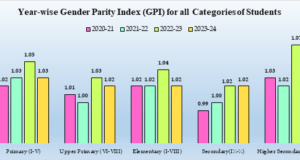Gaurav Bhagat, Managing Director, Consortium Gifts
In the labyrinth of global commerce, where metropolitan giants often steal the spotlight, the silent rise of Tier 2 and Tier 3 cities emerges as a beacon of untapped potential for businesses daring enough to venture beyond the urban sprawl. As consumer behavior resonates in these areas, marketing strategies evolve, demanding insight into local dynamics. We explore tailored approaches, unveiling the nuances shaping consumer perceptions and purchasing behaviors often overlooked by metropolitan focus. While Mumbai and Delhi dominate headlines, India’s Tier 2 & 3 cities drive 70% of GDP by 2025, with a consumer base of 580 million and rapidly growing disposable incomes. Neglecting this demographic goldmine means leaving money on the table. Furthermore, we will dive deep into the unique marketing strategies that proved essential for dominating this mega-developing business landscape.
Consumer Insights in Tier 2 & 3 Cities
Unlike metros, Tier 2 & 3 consumers rely heavily on smartphones for information and purchases. Studies show they spend an average of 2 hours 25 minutes online weekly, with Tier 2 cities leading the pack. This presents a unique opportunity for brands to leverage mobile marketing strategies and build a strong online presence
Studying Hyperlocal Strategies for target cities
While traditional media still holds influence, hyperlocal strategies like partnering with local influencers (micro-influencers with engaged local followings) can be highly effective. Research shows engagement rates for micro-influencers are 8 times higher than those of mega-influencers, making them a powerful tool for reaching targeted audiences in Tier 2 & 3 cities.
Building Trustful Relationships in Tier 2 & 3 Markets
Studies reveal 84% of consumers in Tier 2 & 3 cities prioritize brands that understand and respect their cultural values. Demonstrating cultural sensitivity through language, imagery, and community engagement fosters genuine connections and builds lasting trust with local audiences.
Conclusion:
Tier 2 & 3 cities in India represent a sleeping giant, brimming with potential waiting to be unlocked. Home to over 60% of the population and contributing significantly to the national GDP, these regions offer fertile ground for businesses seeking sustainable growth. By understanding the unique consumer landscape, embracing hyperlocal strategies, fostering trust through cultural sensitivity, and creating seamless omnichannel experiences, businesses can tap into this vast market and become true dominators of the Indian landscape. Remember, with the internet reaching over 750 million users in India, and smartphone penetration exceeding 60%, even Tier 2 & 3 cities are rapidly becoming digital hubs. Hence, every growing individual aims and strategizes around these cities for impactful and diverse results.
 Odisha news today, Latest Oriya News Bhubaneswar Online Odia news Portal
Odisha news today, Latest Oriya News Bhubaneswar Online Odia news Portal




